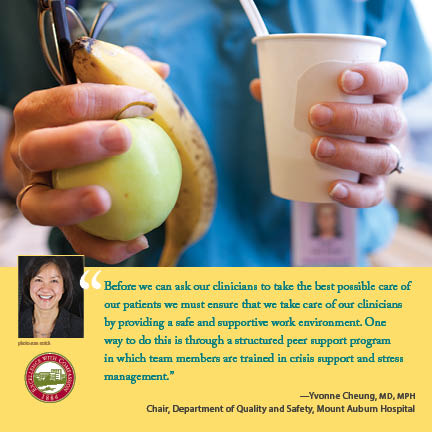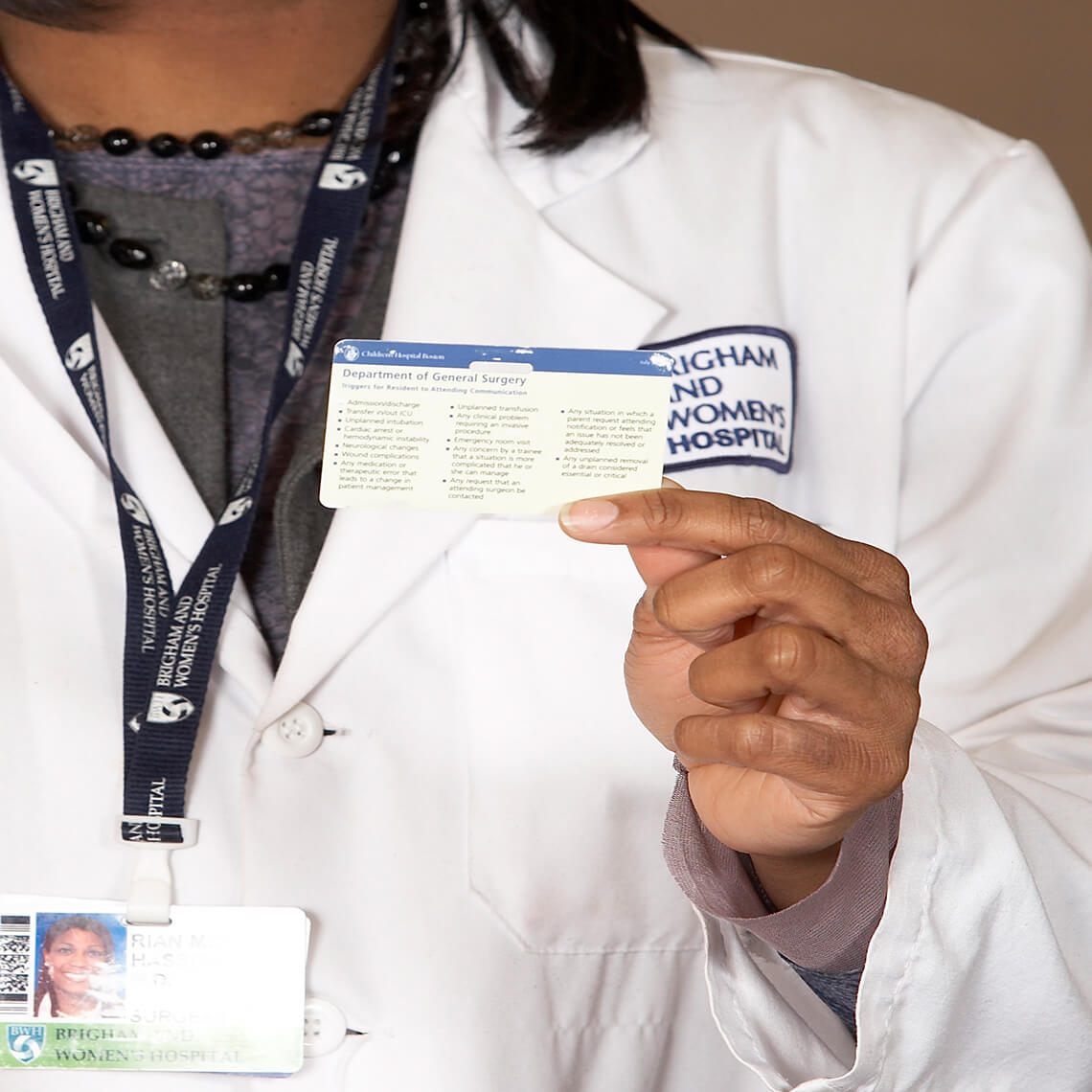Blog Post
December Safety Salute | Mount Auburn Hospital
 Physicians, nurses, and other members of the health care team provide skilled, compassionate care to their patients on a daily basis. Dedicating their lives to caring for the sick or injured and improving the lives of patients and their families is an important facet of working in health care. However, unanticipated medical events can occur and when they do they have a painful impact on the clinicians involved.
Physicians, nurses, and other members of the health care team provide skilled, compassionate care to their patients on a daily basis. Dedicating their lives to caring for the sick or injured and improving the lives of patients and their families is an important facet of working in health care. However, unanticipated medical events can occur and when they do they have a painful impact on the clinicians involved.
Recognizing the importance of supporting health care workers through these trying times, hospitals often establish a peer support program. As Yvonne Cheung, MD, MPH, Chair, Department of Quality and Safety at Mount Auburn Hospital said:
“ Before we can ask our clinicians to take the best possible care of our patients we must ensure that we take care of our clinicians by providing a safe and supportive work environment. One way to do this is through a structured peer support program in which team members are trained in crisis support and stress management. ”
Mount Auburn Hospital’s peer support program provides 24-hour confidential support for its staff and physicians. The program’s goal is to help it’s health care team members return to a satisfying professional practice. This is accomplished by providing a “safe zone” where staff can express their thoughts and reactions to adverse events and offer reassurance that the experience is a normal reaction.
We salute Mount Auburn Hospital’s Peer Support Program for its dedication to supporting health care workers after an adverse event.
Related Blog Posts
Investing in Patient Safety


Mind the Gaps: Learning How to Avoid Miscommunication Pitfalls
January Safety Salute | MedStar Health Creating a Just Culture

